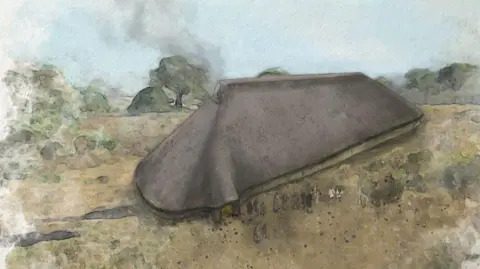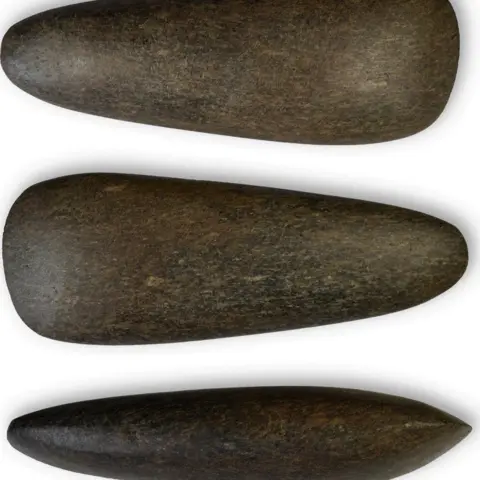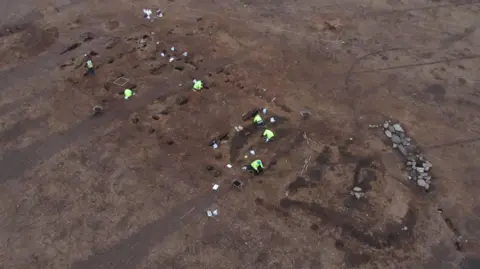Large and ancient farmers' hall unearthed in Angus
 Guard Archaeology
Guard ArchaeologyArchaeologists have discovered the remains of a large and complex hall where some of Scotland's first farmers gathered for festivities.
Evidence of the timber-built building was uncovered at the site of new football pitches in Carnoustie in Angus.
Glasgow-based Guard Archaeology said it was the largest early neolithic timber hall to be found in Scotland, and measured 35m (115ft) long by 9m (30ft) wide.
The Neolithic period ran from about 6,100 years ago to 4,500 years ago and saw Scotland colonised by farmers from mainland Europe.
 Guard Archaeology
Guard ArchaeologyArchaeologists said stone tools were also discovered carefully deposited at the site, which they said offered "tantalising traces" of the hall's role in the local community's beliefs and rituals.
Among the tools were items made from rocks found in other parts of Scotland, suggesting the building attracted visitors from further afield.
The finds included fragments of Arran pitchstone and smoky quartz from the Highlands.
 Guard Archaeology
Guard ArchaeologyBeverley Ballin Smith, one of the co-authors of a new report on the discovery, said: "It was fully formed, architecturally sophisticated, large, complex and required skills of design, planning, execution and carpentry."
A smaller hall, measuring 20m (66ft) by 8m (26ft), was found to have been built next to the large one.
Archaeologists said in the smaller hall there was a hearth with the charred remains of cereal grains and hazel nutshells.
They said these were signs of "feasting and celebrating".
Angus Council commissioned the dig at the site of new pitches near Carnoustie High School.
